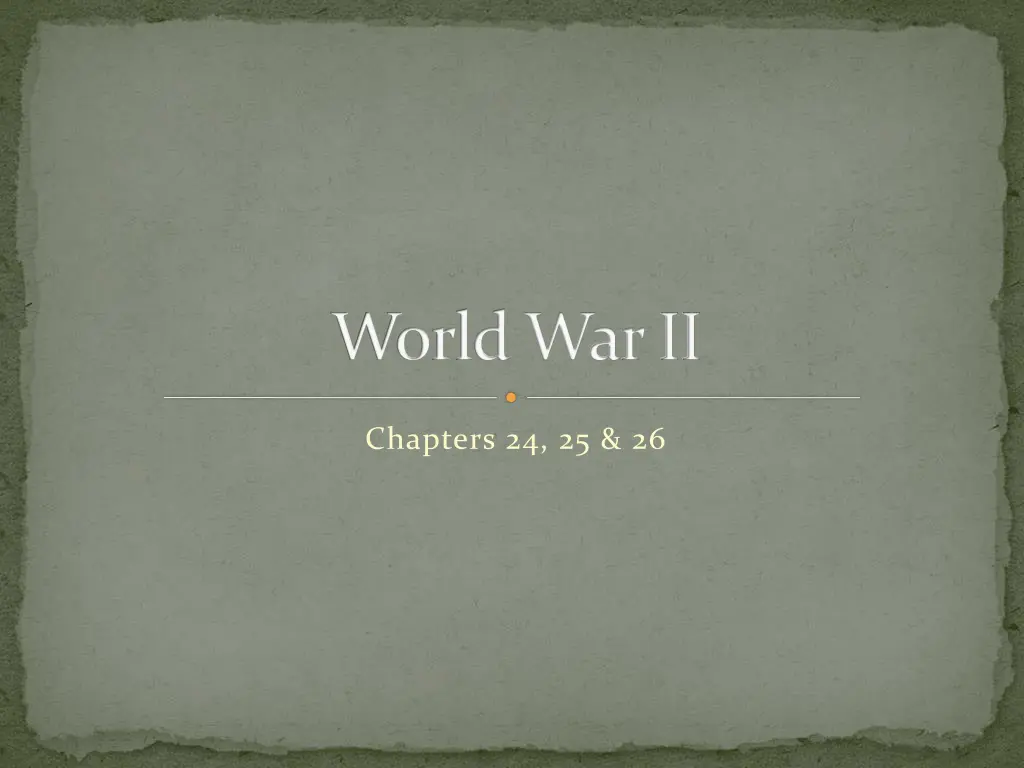
World War II: From Isolation to Pearl Harbor Attack
"Explore the pivotal moments of World War II, from America's transition from isolation to involvement through events like the Lend-Lease Act to the devastating Pearl Harbor attack. Learn about the internment of Japanese Americans and the impact of these historical occurrences."
Download Presentation

Please find below an Image/Link to download the presentation.
The content on the website is provided AS IS for your information and personal use only. It may not be sold, licensed, or shared on other websites without obtaining consent from the author. If you encounter any issues during the download, it is possible that the publisher has removed the file from their server.
You are allowed to download the files provided on this website for personal or commercial use, subject to the condition that they are used lawfully. All files are the property of their respective owners.
The content on the website is provided AS IS for your information and personal use only. It may not be sold, licensed, or shared on other websites without obtaining consent from the author.
E N D
Presentation Transcript
World War II Chapters 24, 25 & 26
From Isolation to War The Lend-Lease Act - In December 1940, Britain confessed its inability to pay cash for supplies. - In response, Roosevelt announced a new plan to provide war supplies to Britain without any payment in return. - Despite protest from the America First Committee, Congress passed the Lend-Lease Act in March 1941. - This act authorized the President to aid any nation whose defense he believed was vital to American security. - Congress further prevented international involvement by passing a series of Neutrality Acts. - The 1st Neutrality Act prevented the US from providing weapons to nations at war. - The 2nd act banned loans to nations at war. - The 3rd act permitted trade of nonmilitary goods with fighting nations, as long as those nations paid cash and transported the cargo themselves. This policy became known as cash and carry.
Pearl Harbor Attacked The Attack - On the morning of December 7, 1941, Japanese warplanes attacked the American naval base at Pearl Harbor on the Hawaiian island of Oahu. - In less than 2 hours, 1000 s of Americans were killed and wounded, and hundreds of American ships and planes were destroyed. - The attack on Pearl Harbor stunned Americans. Roosevelt declared December 7, 1941 as a date which will live in infamy. - On December 8, Congress passed a war resolution, and Roosevelt signed a declaration of war on Japan. - On December 11, Germany and Italy declared war on the US. America was once again involved in a world war.
Internment of Japanese Americans American History Public Policy Analyst Step #1 Identify the Problem: - As a group you should fill out and print the attached Worksheet #1 that is below . Worksheet 1
Internment of Japanese Americans American History Public Policy Analyst Step #2 Gathering Evidence of the Problem: Are you sure it is a real problem? What is your evidence? Fill out and print attached Worksheet #2 that is below . Suggestions: www.google.com www.archives.gov www.wikipedia.org www.pbs.org/childofcamp/history www.ushistory.org/us/51e.asp Worksheet 2
Internment of Japanese Americans American History Public Policy Analyst Step #3 What are the causes? Some things to think about . - After the bombing of Pearl Harbor many American found themselves wary of Japanese Americans and immigrants. - Were they or could they be spies for their government or a danger to society? As a group you should fill out and print Worksheet #3 that is attached below Worksheet 3
Internment of Japanese Americans American History Public Policy Analyst Step #4 Evaluating the Policy With the historian, knowledge of the past is a key to understanding the present . What do you think the famous historian, Kenneth M. Stampp, meant by that statement? In Step #4, you and your group or class will evaluate it. Fill out and print attached worksheet #4 that is below Worksheet 4
